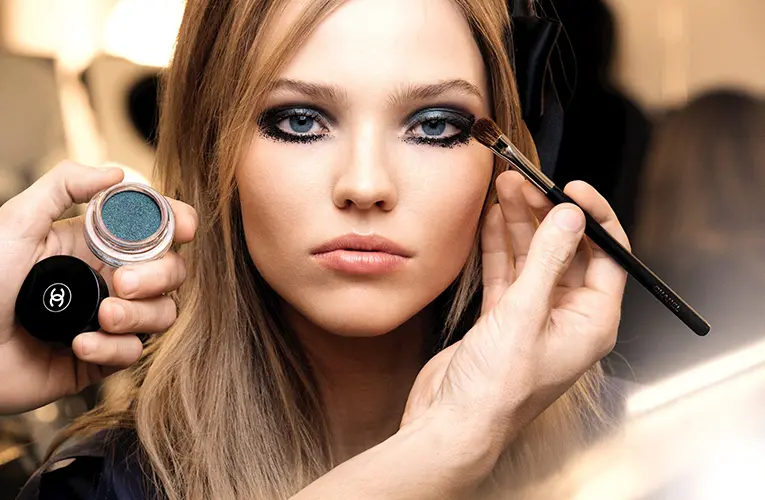“The Science Behind Skincare: Understanding Ingredients and Products for Healthier, Radiant Skin”
### “The Science Behind Skincare: Understanding Ingredients and Products for Healthier, Radiant Skin”
Understanding the science behind skincare can transform your routine from a series of random product applications into a targeted regimen tailored to your skin’s needs. This guide delves into the essential components of skincare, explaining how different ingredients and products work to enhance your skin’s health and appearance.
—
### 1. **The Basics of Skincare Science**
#### **1.1 How Skin Functions**
– **Skin Layers:**
– **Epidermis:** The outermost layer, providing a barrier against environmental factors.
– **Dermis:** Contains blood vessels, nerves, and connective tissues that support the skin and contribute to its strength and elasticity.
– **Hypodermis:** The deepest layer, consisting of fat and connective tissues that cushion the skin and regulate temperature.
– **Skin Functions:**
– **Protection:** Shields against harmful UV rays, pollution, and pathogens.
– **Hydration:** Maintains moisture balance through natural oils and sweat.
– **Regeneration:** Replaces dead skin cells with new ones regularly.
—
### 2. **Key Skincare Ingredients and Their Functions**
#### **2.1 Hydrators**
– **Hyaluronic Acid:** A powerful humectant that attracts and retains moisture, helping to plump and hydrate the skin.
– **Glycerin:** A moisturizer that draws water into the skin and prevents dehydration.
#### **2.2 Exfoliants**
– **Alpha Hydroxy Acids (AHAs):** Water-soluble acids (like glycolic and lactic acid) that dissolve dead skin cells and improve texture and radiance.
– **Beta Hydroxy Acids (BHAs):** Oil-soluble acids (like salicylic acid) that penetrate pores to exfoliate and clear acne.
#### **2.3 Anti-Aging Agents**
– **Retinoids (Retinol):** Vitamin A derivatives that stimulate collagen production and accelerate cell turnover, reducing wrinkles and fine lines.
– **Peptides:** Short chains of amino acids that support collagen and elastin production, enhancing skin firmness and elasticity.
#### **2.4 Antioxidants**
– **Vitamin C:** An antioxidant that brightens the skin, reduces hyperpigmentation, and neutralizes free radicals.
– **Vitamin E:** Protects against oxidative stress and supports skin repair.
#### **2.5 Sunscreens**
– **Physical (Mineral) Sunscreens:** Contain ingredients like zinc oxide or titanium dioxide that reflect UV rays and provide a physical barrier.
– **Chemical Sunscreens:** Absorb UV rays through ingredients like octocrylene or avobenzone and convert them into harmless heat.
#### **2.6 Soothing Agents**
– **Aloe Vera:** Provides hydration and has anti-inflammatory properties that calm irritated skin.
– **Chamomile Extract:** Known for its soothing and anti-inflammatory effects, helping to reduce redness and irritation.
—
### 3. **Formulation Matters: How Products Work Together**
#### **3.1 Layering Products**
– **Order of Application:** Apply products from thinnest to thickest (e.g., serums before moisturizers) to maximize absorption and efficacy.
– **Active Ingredients:** Be cautious when combining potent actives (like retinol and Vitamin C) to avoid irritation or decreased effectiveness.
#### **3.2 pH Balance**
– **Skin’s pH:** The skin’s natural pH is slightly acidic (around 4.5-5.5). Using products that maintain this balance can help preserve the skin barrier and prevent issues like dryness or irritation.
#### **3.3 Absorption and Efficacy**
– **Delivery Systems:** Encapsulation technologies and liposomal formulations can enhance the delivery and stability of active ingredients.
—
### 4. **Personalizing Your Skincare Routine**
#### **4.1 Identify Your Skin Type**
– **Normal:** Balanced, not too oily or dry.
– **Oily:** Excess oil production, prone to acne and shine.
– **Dry:** Lack of moisture, may feel tight or flaky.
– **Combination:** A mix of oily and dry areas.
– **Sensitive:** Prone to irritation and redness.
#### **4.2 Tailoring Ingredients**
– **For Acne:** Look for products with salicylic acid, benzoyl peroxide, and niacinamide.
– **For Dryness:** Focus on hyaluronic acid, ceramides, and richer moisturizers.
– **For Aging:** Use retinoids, peptides, and antioxidants.
#### **4.3 Patch Testing**
– **Avoid Reactions:** Test new products on a small area of skin to check for adverse reactions before full application.
—
### 5. **Maintaining a Healthy Skincare Routine**
#### **5.1 Consistency is Key**
– **Daily Care:** Stick to a routine that includes cleansing, moisturizing, and sun protection.
– **Adapt as Needed:** Adjust your routine based on changes in your skin’s condition or seasonal variations.
#### **5.2 Seek Professional Advice**
– **Dermatologists:** Consult with skincare professionals for personalized recommendations and to address specific concerns.
– **Regular Check-ups:** Routine visits can help monitor skin health and adapt your regimen as needed.
—
### 6. **Conclusion**
Understanding the science behind skincare ingredients and their functions helps you make informed choices about your beauty regimen. By selecting products that match your skin type and concerns, and by using them effectively, you can achieve healthier, more radiant skin. Embrace the science of skincare to build a routine that supports your skin’s natural functions and enhances your overall appearance.
—
This guide provides a comprehensive overview of skincare science, offering practical advice on ingredients, product formulation, and personalizing your routine to achieve the best results.










